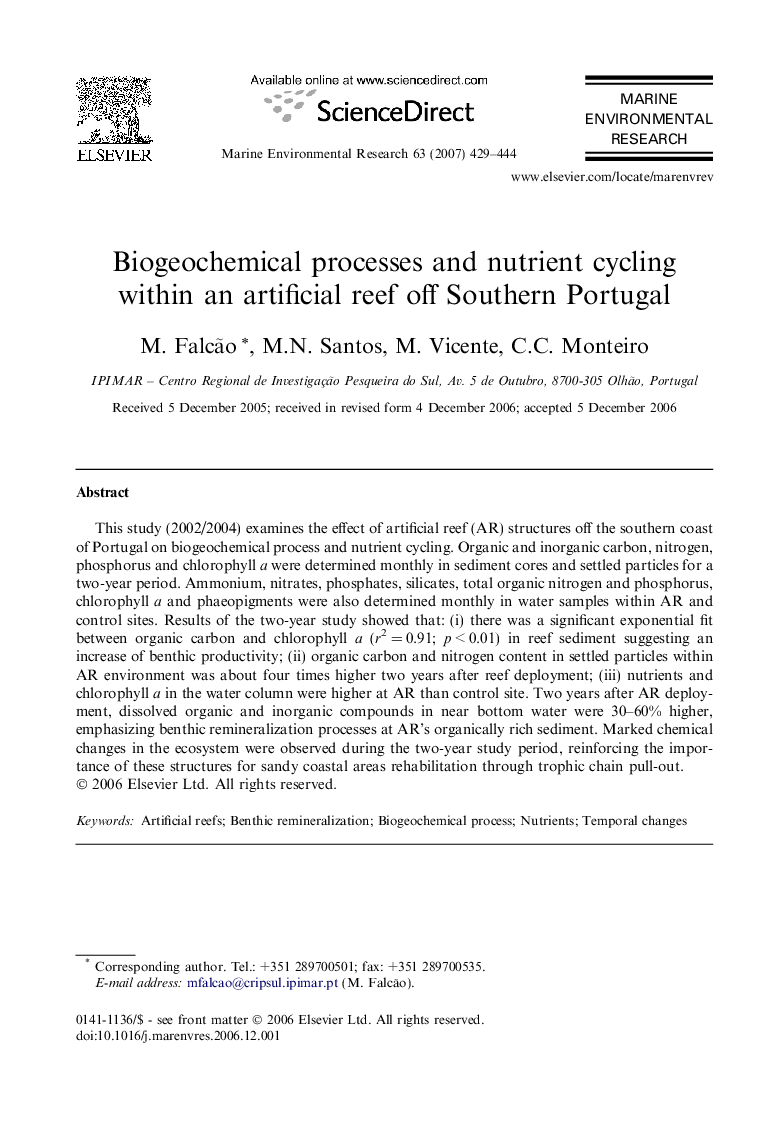| Article ID | Journal | Published Year | Pages | File Type |
|---|---|---|---|---|
| 4551675 | Marine Environmental Research | 2007 | 16 Pages |
This study (2002/2004) examines the effect of artificial reef (AR) structures off the southern coast of Portugal on biogeochemical process and nutrient cycling. Organic and inorganic carbon, nitrogen, phosphorus and chlorophyll a were determined monthly in sediment cores and settled particles for a two-year period. Ammonium, nitrates, phosphates, silicates, total organic nitrogen and phosphorus, chlorophyll a and phaeopigments were also determined monthly in water samples within AR and control sites. Results of the two-year study showed that: (i) there was a significant exponential fit between organic carbon and chlorophyll a (r2 = 0.91; p < 0.01) in reef sediment suggesting an increase of benthic productivity; (ii) organic carbon and nitrogen content in settled particles within AR environment was about four times higher two years after reef deployment; (iii) nutrients and chlorophyll a in the water column were higher at AR than control site. Two years after AR deployment, dissolved organic and inorganic compounds in near bottom water were 30–60% higher, emphasizing benthic remineralization processes at AR’s organically rich sediment. Marked chemical changes in the ecosystem were observed during the two-year study period, reinforcing the importance of these structures for sandy coastal areas rehabilitation through trophic chain pull-out.
